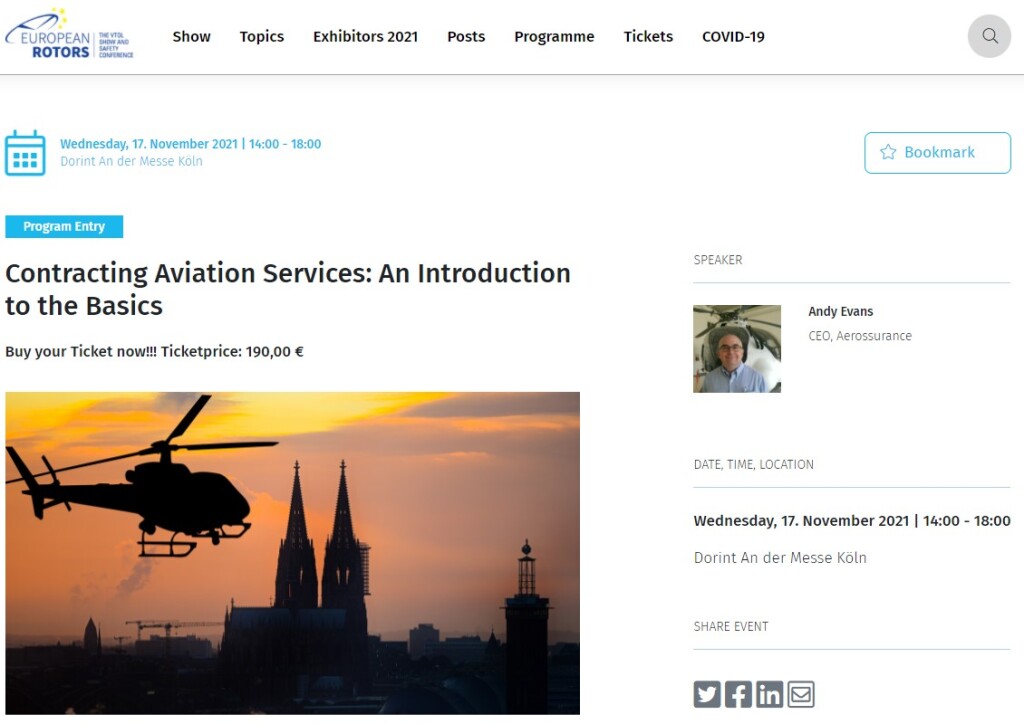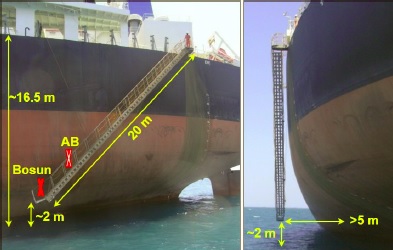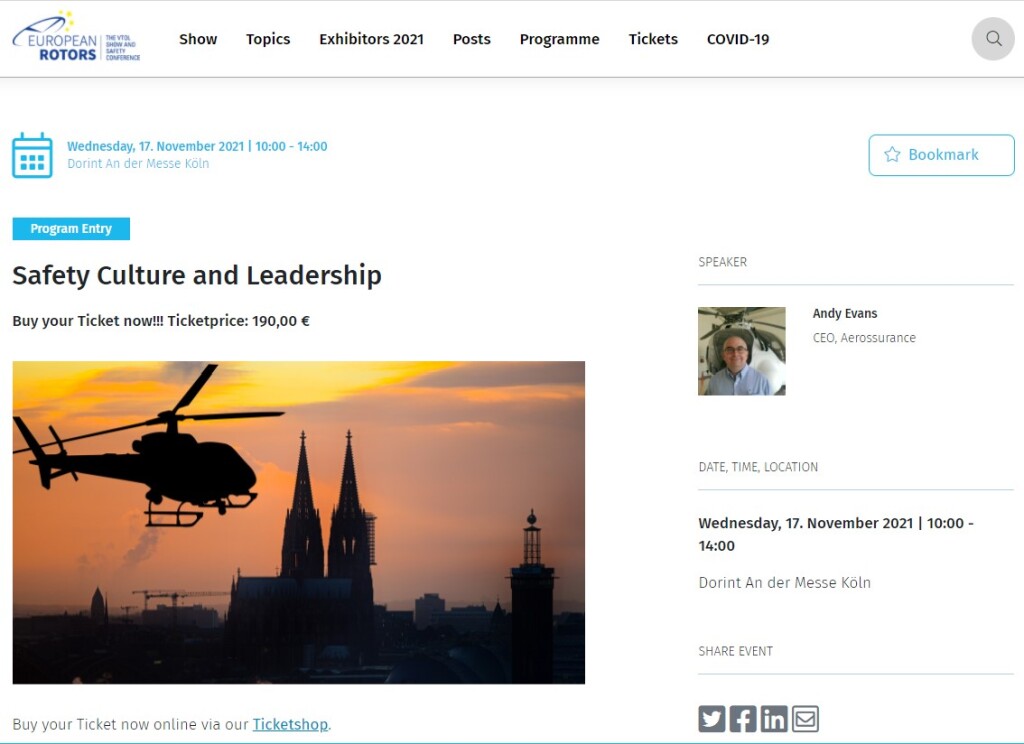Culpable Culture of Compliance?
The Australian Transport Safety Bureau (ATSB) has published their report into a fatal man over board (MOB) from the bulk carrier Cape Splendor off Point Headland, WA on 6 October 2014.
This report is of wider interest because it discusses how blindly emphasising compliance without considering risk may create a culture that actually undermines safety.
The Fatal Accident
The Singaporean flagged 206,000 dwt vessel was anchored 13 miles offshore, awaiting to load iron ore. The bosun descended the accommodation ladder during his lunch break, intending to fish.
He lost his balance and fell into the sea. A seaman with him threw a lifebuoy toward the bosun and raised the alarm.
The ship’s crew deployed its rescue boat within 10 minutes, and an extensive air and sea search continued for 3 days. However, the bosun was not found.
The Cape Spendor FRC searching in calm seas near lifebouys thrown towards the MOB less that 12 minutes after the alarm was raised (Credit: Ship’s Master via ATSB)
…the bosun and the seaman were not wearing any flotation devices [although they had been when they rigged the ladder before lunch] or fall prevention equipment. The bosun had seen fish below the accommodation ladder that was in the shade, and he probably saw it as a good opportunity to fish without considering the risks involved.
The lack of a lifejacket, wet clothing, and possible entanglement with fishing gear, sea conditions, and the current would have adversely affected the bosun’s ability to stay afloat and swim.
The ATSB investigation also identified that the ship’s safety management system procedures for working over the ship’s side were not effectively implemented. Hence, the ship’s crew routinely did not take all the required safety precautions when working over the side.
Culture
The ATSB go on to discuss the culture aboard the ship. Based in interviews and observations they say (emphasis added):
Crewmembers did not always consider all possible risks when following safety procedures for work tasks, and they did not see that similar safety precautions were necessary for recreational tasks.
On board Cape Splendor, a culture of safety compliance prevailed, wherein people behaved in a safe manner not because they perceived safety as an important organisational goal, but because there was a rule that they felt obliged to obey. Further, this was limited to work tasks, with no evident regard to safety during recreational activity outside of work hours. A genuine commitment to a safety culture had not yet been fully developed.
The above demonstrates the challenges faced in striving to ensure that safety values and attitudes are considered across all shipboard activities…
Research has shown that employees will take their cues about the importance of safety behaviours from what they observe is rewarded by their supervisors and close superiors, rather than from the company’s policies. It is therefore critically important that masters, officers and supervisors take every opportunity to encourage and reinforce the primary importance of safety at all times, and across all activities.
The safety culture on board Cape Splendor was not well developed and the ship’s managers [U-Ming Marine Transport] had earlier identified it as such. A consequence of this inadequacy was the ineffective implementation of working over the side procedures, including the general belief by its crew that safe work practices applied only when working, and not during recreational activities.
Our Observations
We think that the ATSB neatly reiterates that leadership is a powerful influence on organisational culture, local norms and work practices. While top management can and should have a big influence, its essential to ensure that consistent values, expectations and behaviours are demonstrated throughout an organisation.
Disappointingly the ship management company reported that they are working to develop their safety culture “through safety circulars and the internal auditing system”. We think they have fundamentally missed the point!
The ATSB uses the term ‘culture of safety compliance’ in a negative sense as inferior to a true ‘culture of safety’. We believe they are not saying that compliance with rules and regulations is unnecessary. Instead they are contending that safety is far more that compliance with rules and regulations. Not only do rule and regulations set out just the minimum standard, but fixation only on rules and regulations, rather than fully considering risk, stifles continuous improvement and can lead to what we term ‘compliant accidents’.
We do find it perverse to see some consultancies / training providers treating compliance not only at the heart of safety management (in their eyes) but as the foundation of organisational performance.
Safety Leadership and Culture Resources
We highly recommend this case study: ‘Beyond SMS’ by Andy Evans (our founder) & John Parker in Flight Safety Foundation‘s, AeroSafety World, May 2008 which discusses the importance of culture, safety leadership and the practical experience developing safety leadership skills across managers and supervisors in an international air operator.
You may also be interested in these Aerossurance articles:
- How To Develop Your Organisation’s Safety Culture practical advice on the value of safety leadership and an aviation example of safety leadership development.
- How To Destroy Your Organisation’s Safety Culture a cautionary tale of how poor leadership and communications can undermine safety.
- The Power of Safety Leadership: Paul O’Neill, Safety and Alcoa a real life example of safety leadership and how the stock markets reacted badly until O’Neill’s focus on safety, responding to employee suggestions and continuous improvement (not mere compliance) started to created exceptional business performance.
- UPDATE 26 April 2016: Chernobyl: 30 Years On – Lessons in Safety Culture
A paper by the Health and Safety Laboratory is worth attention: High Reliability Organisations [HROs] and Mindful Leadership. Mindfulness is developed further in a paper by the Future Sky Safe EU research project and by Andrew Hopkins at the ANU.
You may also be interested in this thoughtful piece that touches on the cultural affect of overly-compliance focused audits: Boxing and dancing – The challenges of enforcement in global shipping
In 2010 the UK Maritime and Coastguard Agency, supported by BP Shipping, Teekay Marine Services, and the Standard P&I Club, produced The Human Element: a guide to human behaviour in the shipping industry
UPDATE 30 October 2016: For a more general discussion on culture see: New research and a new understanding about culture change in organisations. This discusses the ‘Mosaic Theory’ explaining that:
In the last few years our understanding of culture and how we take on cultural attributes has shifted away from the idea that culture is a homogeneous solid entity to the understanding that:
- Cultures are dynamic, ever changing entities
- Cultures don’t exist nor can be defined on their own. All cultures are in fact made up of a mosaic of different sets of behaviours, thinking and beliefs from a wide range of sources.
- Individuals navigate the range of cultures they encounter and learn to ‘fit in’. So for example our family will have a culture that most likely is very different from the culture at work or from a social group.
- From an individual’s perspective cultures are made up of identifiable layers or tiles which are shared or not shared between the various cultures they encounter on a daily basis.
In a follow up article, The 3 Main Conclusions and Findings from New Research about Culture Change in Organisations, it was noted that research has shown that at work “most people take their cultural cues for behaviour and beliefs from the following areas of their life” in descending order:
- The culture of the organisation
- The culture of their profession
- Experience (Age)
- Their family values
- Their nationality and ethnicity equally
- Whether they come from an urban or rural area, so rural or urban cultural values
- Hobbies
- Religion
UPDATE 22 March 2016: We discuss the Solent Hoegh Osaka Car Carrier Accident
UPDATE 8 December 2016: Aerossurance founder, Andy Evans, presented on the topic of safety leadership at a UK CAA helicopter safety culture seminar today.
UPDATE 16 February 2017: See also our article Consultants & Culture: The Good, the Bad and the Ugly
UPDATE 24 December 2017: The Leader’s Guide to Corporate Culture
UPDATE 7 January 2018: A Railroad’s Cult of Compliance We look at lessons in a NTSB Amtrak rail accident report on how a cult of compliance and over emphasis on judging front line workers can lead to disaster, lessons relevant to all industries.
UPDATE 8 February 2018: The UK Rail Safety and Standards Board (RSSB) say: Future safety requires new approaches to people development They say that in the future rail system “there will be more complexity with more interlinked systems working together”:
…the role of many of our staff will change dramatically. The railway system of the future will require different skills from our workforce. There are likely to be fewer roles that require repetitive procedure following and more that require dynamic decision making, collaborating, working with data or providing a personalised service to customers. A seminal white paper on safety in air traffic control acknowledges the increasing difficulty of managing safety with rule compliance as the system complexity grows: ‘The consequences are that predictability is limited during both design and operation, and that it is impossible precisely to prescribe or even describe how work should be done.’
Since human performance cannot be completely prescribed, some degree of variability, flexibility or adaptivity is required for these future systems to work.
They recommend:
- Invest in manager skills to build a trusting relationship at all levels.
- Explore ‘work as done’ with an open mind.
- Shift focus of development activities onto ‘how to make things go right’ not just ‘how to avoid things going wrong’.
- Harness the power of ‘experts’ to help develop newly competent people within the context of normal work.
- Recognise that workers may know more about what it takes for the system to work safety and efficiently than your trainers, and managers.
UPDATE 12 February 2018: Safety blunders expose lab staff to potentially lethal diseases in UK. Tim Trevan, a former UN weapons inspector who now runs Chrome Biosafety and Biosecurity Consulting in Maryland, said safety breaches are often wrongly explained away as human error.
Blaming it on human error doesn’t help you learn, it doesn’t help you improve. You have to look deeper and ask: ‘what are the environmental or cultural issues that are driving these things?’ There is nearly always something obvious that can be done to improve safety.
One way to address issues in the lab is you don’t wait for things to go wrong in a major way: you look at the near-misses. You actively scan your work on a daily or weekly basis for things that didn’t turn out as expected. If you do that, you get a better understanding of how things can go wrong.
Another approach is to ask people who are doing the work what is the most dangerous or difficult thing they do. Or what keeps them up at night. These are always good pointers to where, on a proactive basis, you should be addressing things that could go wrong.
UPDATE 13 February 2018: Considering human factors and developing systems-thinking behaviours to ensure patient safety
Medication errors are too frequently assigned as blame towards a single person. By considering these errors as a system-level failure, healthcare providers can take significant steps towards improving patient safety.
‘Systems thinking’ is a way of better understanding complex workplace issues; exploring relationships between system elements to inform efforts to improve; and realising that ‘cause and effect’ are not necessarily closely related in space or time.
This approach does not come naturally and is neither well-defined nor routinely practised…. When under stress, the human psyche often reduces complex reality to linear cause-and-effect chains.
Harm and safety are the results of complex systems, not single acts.
UPDATE 21 April 2020: New Mexico hospitals threw away essential protective gear just ahead of Covid-19
In late January and early February [2020], American public health experts warned about a possible Covid-19 epidemic that would almost certainly require a massive supply of hospital masks, gloves and hand sanitizer. At the same time, at least two major New Mexico hospitals were throwing those very items into the trash. That’s because her hospital at the time thought it had a more immediate concern – an upcoming routine safety inspection by the Joint Commission, a private not-for-profit that regularly inspects more than 22,000 American healthcare organizations. A visit from the Joint Commission typically throws hospitals into heightened anxiety. It’s an open secret, however, that while printed expiration dates are critically important for some medical products, they’re virtually meaningless for others. After the inspectors left New Mexico, guidance changed. By the end of February, the CDC said that some expired N95 masks are actually safe to use as a last resort. The Joint Commission curtailed its inspections mid-March, and later wrote on its website that healthcare organizations could now consider using expired masks.
Aerossurance‘s Andy Evans has volunteered to deliver two training sessions at European Rotors on 17 November 2021. Places are still available to book but likely to be unavailable by mid-October so don’t hesitate!





Recent Comments